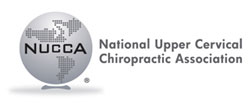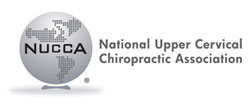By Daniel C. Seemann, Ph.D.
Vol. 5. No. 5, May 1995
There are approximately 1,000 chiropractors in the USA who are upper cervical adjustors. Of this number, NUCCA has about 150 members who adjust the atlas. It is not clear how many adjust the atlas exclusively or use other modalities. The guess is there are maybe 75 members who are hard-core manual adjusters. This figure has not changed much over the past 25 years, even though the training has improved and there is a much greater pool of field doctors available. Perhaps the most puzzling: Why so few, when the NUCCA work is generally considered the most challenging and rewarding of all the systems in chiropractic. This article will examine some of the issues which might be contributing factors. ln talking to the membership, there are many hypotheses and it is always a topic at the seminars.
It is possible to classify NUCCA members by training and experience. The first level would include students, recent graduates, or interested field doctors (Basic). The next group is those taking the intermediate work which includes the basic biomechanics and adjusting (Intermediate). The third tier are experienced field doctors who want to stay current but are not interested in certification (Advanced). The last level are those who are seeking certification or are certified.
Ideally, a growth pyramid should be in place, whereby those at the lowest level of training and experience would act as the broad base for the organization. With each step of the hierarchy, the numbers would narrow. At the top of the pyramid would be the certified doctors. Currently there are 31 doctors, either certified or in the process.
The reverse is true for NUCCA; there are considerably more certified doctors than new people coming into the work. This is bad news for NUCCA, because it signals little growth for the organization in the next few years and worse, patients who would benefit from an atlas adjustment will be denied.
The most frequent answer to why there are so few NUCCA doctors is that the work is too difficult. The two major divisions to master are the analysis and the adjustment. Within each part, there are probably areas which are hard to comprehend, but learning the analysis seems easier than the adjustment. A recent study (1994) showed that a majority of a large group of NUCCA doctors reading a positive film (under less than ideal conditions) were within a half of one degree of the correct laterality. Twenty years ago that high degree of accuracy would not have been realized. lt also supports the notion that maybe the training has also improved. Certainly, the level of understanding about the analysis has changed.
Learning the adjustment might be what makes NUCCA work so difficult to master. The analysis is more of a cerebral cognitive procedure. There is measurement, and the relationships are understood. The analysis is logical and rational. On the other hand, mastering the adjustment is an art form. It requires skill and precision. Each adjustor brings a unique posture into play. A certain amount of physical dexterity is required. So, not unlike an artist, there is an emotional component involved. The adjustor has to feel the feedback and has to know when the vertebra are moving. This skill develops with practice but takes longer to master than the analysis.
Teaching the adjustment is more difficult than the analysis because of the many variables cited above. The coach can explain how to shoot the basketball, but the final skill rests with the player. The same is true with the adjustor. The step-by-step phases teach how to adjust, but working on a coordinator at a seminar is different than working on a patient in the office. The post X-ray can be very frustrating, especially if the subluxation has not changed or increased. Two seminars per year cannot reduce the learning curve for adjusting. It can be a slow, difficult process, especially if the field doctor is alone or geographically isolated from his/her colleagues.
While there is agreement among the other upper cervical groups with the cervical analysis, the adjusting instrument has become popular outside of NUCCA. They would probably agree that the hand adjustment is more precise than instrument adjusting, but the time it takes to learn the instrument and get reductions is considerably less than it would take to learn the hand adjustment. This becomes attractive to new field doctors.
This may be why NUCCA is having difficulty in either attracting or retaining new people. Perhaps the bottom line here is that if a choice is to be made to learn the NUCCA work, the individual must know it is going to take time, sacrifices, and patience. If NUCCA had a residency program, it probably would take as long as five years.
Another factor is an economic one. The amount of debt a recent graduate has is about $100,000. They are told they should be making big money in a relatively short period of time. This might be true if the new doctor is willing to prostitute himself at the expense of the patient. NUCCA has never made the claim about a lot of money. Most NUCCA folks will tell you that it was a struggle early on, but they felt good about the solid growth of their practices and the fact that they had helped their patients. So the pool of new graduates will be quickly screened out if they think they will make a lot of money early on, especially if they have major debt.
Attracting doctors who have been in the field for a few years is even more difficult. Once in the field and making a good living, it becomes almost impossible to change, even though the NUCCA work is more attractive. Lee Yardly and Otto Portman can relate how hard it can be switching to NUCCA after coming from big, successful practices. This pool, therefore, is not potentially a good one for NUCCA.
This paper has basically examined two problems as to why there are so few NUCCA doctors: That the NUCCA work is difficult to learn, and this, in turn, dissuades new doctors from considering NUCCA as a professional option.
As we indicated earlier the learning curve with the adjustment must somehow be shortened. The training for adjusting has not really changed much over the past 30 years: Break down into groups and work on the coordinator. There must be some training device beyond the coordinator. With the technology today, something must be available. Perhaps there needs to be more regional seminars that concentrate solely on adjusting. The problem certainly is a legitimate agenda item for the NUCCA/ NUCCRA Boards.
There is a term used in psychology called Locus of Control. A person can be classified as either internal or external. People who are internally focused tend not to believe in luck or chance, and they are responsible for their behavior. So if they do good or bad, they will take credit for their actions. Externals believe in luck, chance, or fate. If they fail or are successful, they blame it on external factors. Scientists tend to be internal, because they are interested in cause and effect. Philosophers probably are more external.
It is the writer’s opinion that NUCCA doctors tend to be internal. They are analytical. They like the notion of pre and post X-rays that can be measured. They don’t want to leave things to chance. They want to know immediately if they reduced the subluxation. The term innate is not mentioned very often. They want to know how and why things happen. They tend to be critical of themselves and others if they can’t get the right answers. They are not impressed with modalities that have nothing to do with the reduction of the atlas subluxation. If you want to impress them, show your post X-ray. Most are not interested in fame or fortune. They are interested, though, in serving their patients the very best they can.
NUCCA does set a standard for the chiropractic profession and those who survive the challenges rate at the very top in their field





